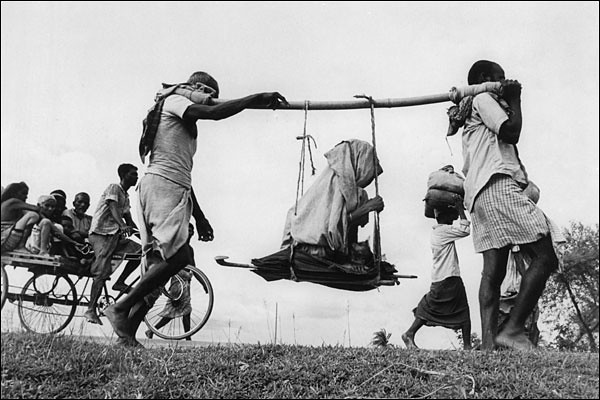
This month marks 75 years since South Asia witnessed the brutal Partition of the Indian subcontinent as the newly created states of India and Pakistan gained independence from the British Empire. With estimates of up to 20 million forcibly displaced by borders drawn on religious lines, the death and destruction during one of the largest mass migrations in modern history reached levels unparalleled. Newly created physical borders across terrain gave way to newly formed imagined borders dividing friends, neighbors, and communities. Partition continues to live on, yet amid its enduring legacy on the tumultuous politics and security of the subcontinent, it is the human stories that are often left forgotten. On the 75th anniversary of Partition, South Asian Voices is publishing personal reflections from our contributors on how the legacy of Partition lives on in their own lives. From family memories to memoirs of long-lost homes, from how it is discussed in history textbooks to the contested nature of its own history, Partition continues to reconfigure the quotidian human experience in South Asia. It is only through remembrance and acknowledgement that the communities and nations scarred by its brutality can begin to heal. If you would like to reach out with a individual reflection you can reach out over email to authors@southasianvoices.org.
How Partition Shaped One Family
Ali Ahmed
The state of Hyderabad, situated in the Deccan, was not impacted by Partition as much as it was by what was termed “Police Action.” Even so, Brigadier Ali Ahmed of the Hyderabad State Forces was determined to keep his family together and in India. During Police Action, he commanded the southwestern sector against the invasion of Indian forces. As member of the Hyderabad delegation in the Standstill talks with India, he had advised against the confrontation, relying on military knowledge from his days as the first State Forces officer to undergo training at the Quetta Staff College.
Though he chose not to take up the Indian Army’s offer to join, he sent his son who had been escorted back from the Royal Indian Military College during Partition, along with other Muslim cadets, to rejoin the school. Two younger sons soon followed their brother into the military. Their three sisters married officers of the security forces. From the next generation, three joined the Services. By the early nineties, their immediate family had members serving at every rank, from second lieutenant to lieutenant general. Today, while the rest have retired, a Major General commands a formation on the China front. Thus, Brigadier Ali Ahmed ended up patriarch of the Indian Muslims largest Services family.
Division and Connection
Fizza Batool
Partition, for me, is just another layer over my already-blurred identity. Another migration for my family and another land to call ours. Being Syed, I am an Arab. But I am an Afghan too for my ancestors lived for years in Gardez. I became Indian in the 18th century as my family moved to India with the Ahmed Shahd Durrani’s army. All my grandparents were born in British India. Working in the federal service, my father moved from one province to the other, ultimately making it impossible for me to decide my real homeland.
Working in the federal service, my father moved from one province to the other, ultimately making it impossible for me to decide my real homeland.
For my grandparents, migration induced a feeling of loss. I grew up hearing stories of deceit, fear, bloodshed, and rape. Yet for me, this is a blessing in disguise. It broadened my perspective, as it intrigued me to read and learn more about the different lands where my ancestors lived. I can connect in one way or another with people of different cultural and geographical identities. Collecting field data gets easier this way. It also made me question the essence of being, the notion of geographical boundaries, and the concept of nationalism. It allowed me to see the temporariness of the identities we see as permanent. Partition divides many but for me, it is a source of connection.
The ‘Woman Question’: Reflections on Partition’s Feminist Struggles
Zainab Najeeb
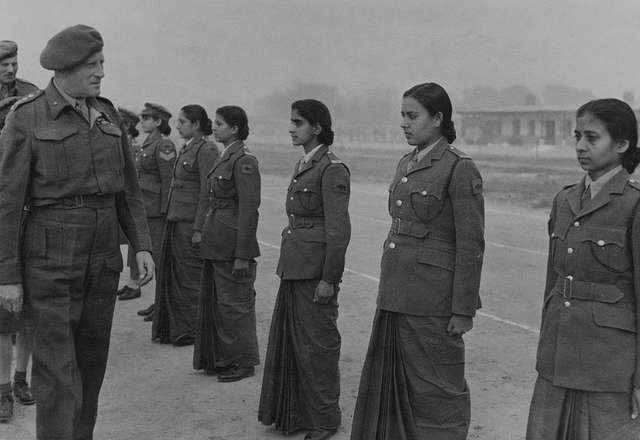
I started my professional academic career in Pakistan by undertaking the task of teaching Pakistan Studies to undergraduate students. Having always studied the subject as part of the mandatory school curriculum, I knew this history of ours was plagued with silences and censorship. However, in a liberal university setting, I learned more as a teacher than I ever had as a student. It was in those months, especially when met with the task of compressing several women’s movements across the history of the subcontinent and Pakistan into a single session, I realized that women’s activism within the Pakistan Movement (pre and post-Partition) is structurally erased, with the gap facilitating the current-day accusatory narrative directed towards emerging feminist movements as “western” and “alien.” This encouraged me to design my own course “A Brief History of Feminist Movements in Pakistan” ranging from pre-partition anti-imperialist politics to today’s world of online activism and feminist democratic movements. The purpose of this course is to trace the trajectory of feminist struggles and women-centric movements within the larger history of Pakistan. The course looks at feminist movements, not as an appendage, but as essential to the very existence of this independent nation-state, accentuating the national importance of ‘the woman question’, which has been bolstered by an age of transnational solidarity.
This course is intended to highlight and celebrate local feminist heroes and role models so that younger Pakistani women know that they are equal and free citizens of an independent nation-state. I as a South Asian scholar do not have to look to the Global North for inspiration; this plurality of feminism has now equipped me with the skill set to invest in processes of local knowledge production while upholding lost legacies of the past.
Partition and Pakistan’s Religious Minorities
Riaz Khokhar
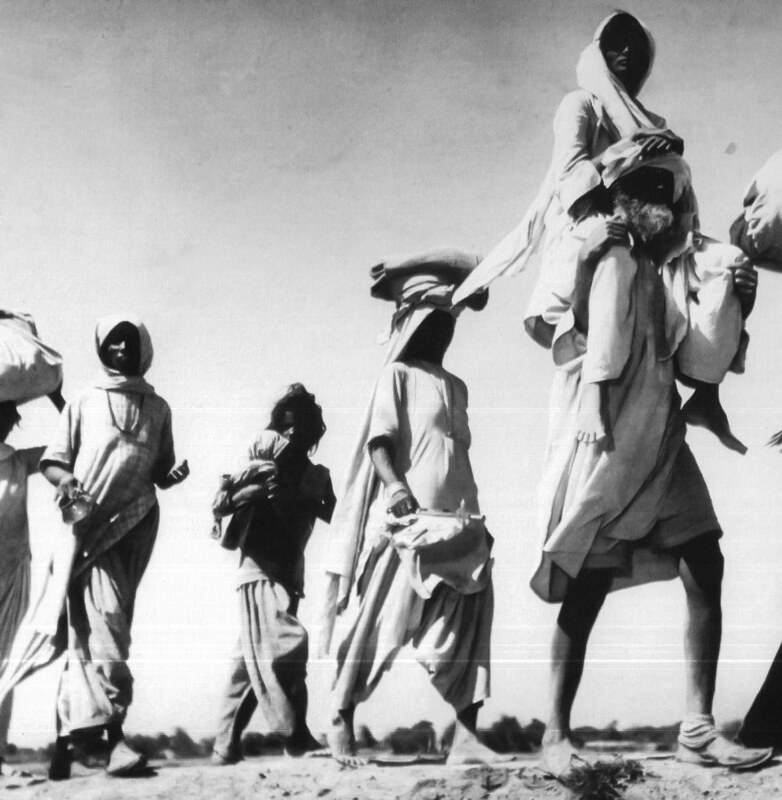
A Samadhi temple is a five-minute walk from my home in Shikarpur where Hindu families, including from India, come in droves for worship. During my college years, I visited the temple a couple of times with my Hindu colleagues. My parents are still in touch with a couple of Hindu doctors from Shikarpur who gave them medical treatment from a young age. In places I have been to in Sindh or know of through friends, the Muslims and Hindus live amicably, and many Hindu and Muslim students at universities are good friends, share dormitories, and dine together.
A significant chunk of the Partition legacy that keeps me awake at night is the inter-religious hatred in most parts of Pakistan and how things could have been different in terms of inclusivity, interfaith harmony, and cultural diversity, if the non-Muslim communities in Pakistan had received state protection for their life, creed, culture, and property.
I think the Islamist political parties in Pakistan did not embrace modernity while coming to terms with a separate homeland for the Muslim nation of the subcontinent. They institutionalized a specific version of Islam (predominantly a Sunni school of thought) in the Constitution of a modern nation-state. It engendered exclusionary politics and threatened the minority religious communities. These non-Sunni and non-Muslim religious communities live at the mercy of the dominant religious sect. As a result, the country has witnessed grisly periods of sectarian and inter-religious violence.
‘Habibullah from Zanskar’
Zainab Akhter
In 1948, when permanent lines were carved out between India and Pakistan in Kargil, a region in Ladakh, many families were also permanently divided along these lines. My great grandfather, along with a group of men hailing from Zanskar, crossed into the Skardu region during communal tensions in 1947. For him, the move was only temporary, and he wanted to come back to his home and family after the tensions died down. But unfortunately, the permanent lines of the LoC and simultaneously, the never-ending tensions between India and Pakistan, killed all his dreams of returning to India. On this side, in Zanskar, he left an eleven-year-old son (my late grandfather Haji Abdul Hamid) to look after his mother and three sisters. All his life, late Abdul Hamid yearned to meet his father who had remarried and settled in the Sermik village of Skardu. Both father and son wrote to each other, and the letters were sent to pilgrims from both sides of the border that then met in Saudi Arabia to exchange letters, photos, and gifts.
The moment my late grandfather said a prayer at his father’s grave, which was clearly engraved in Urdu “Habibullah from Zanskar,” I saw his face brighten up with tears of joy.
All my life, I have heard stories of Partition from my late grandfather and how he wished to travel to Sermik to say a prayer on the grave of his late father. I chose Indo-Pak relations as my area of research and got the opportunity at a later stage to travel to Pakistan for my field study, where I managed to meet one of my cousins in Lahore in 2014. We reconnected the family and my late grandfather to his brothers in Sermik. Later in 2017, I managed (this is a story for another day) to fulfill my late grandfather’s dream, and I, along with my parents, traveled all the way to Sermik village in Skardu from Zanskar in the Kargil district. It was an emotional journey for all of us, especially for my late grandfather, as we were reunited with the extended family in Sermik. The moment my late grandfather said a prayer at his father’s grave, which was clearly engraved in Urdu “Habibullah from Zanskar,” I saw his face brighten up with tears of joy.
Like his, there are many untold stories of Partition and most of the families are never able to meet each other due to the stringent visa policies in India and Pakistan. That said, our journey has set the ball rolling and opened avenues for other families to dare to dream about meeting their relatives on the other side of the LoC.
Ruminations from my Nana
Akshara Suhasini
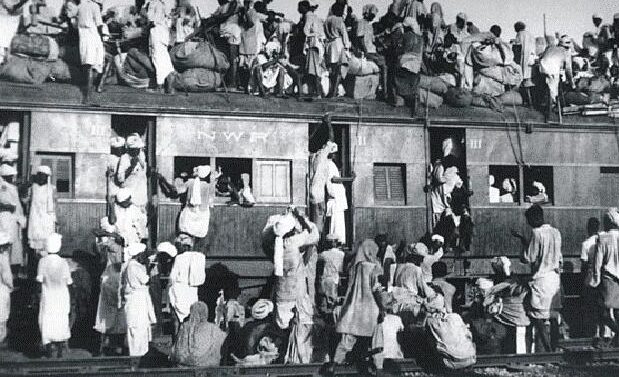
I was ten in 2006 when we moved to New Delhi from Kolkata, almost the exact age my Nana was when his family moved from Dhaka to Kolkata in 1947. Born the sixth of eight children in September 1936, Nana and two younger siblings were still in Dhaka with their parents when British India gained independence.
The family was Anglophilic to the extent that my great-grandfather did not make the journey from Dhaka to Kolkata until 1950. He remained convinced the Radcliffe Line was a temporary measure. While his family’s migration was not as physically exhaustive and hasty as the others of Partition, this never hindered my grandfather’s ability to fully recognize its horrors. They had to leave all their possessions behind, yes, but they always believed they would return soon.
It was always difficult to talk to Nana about 1947. He was amusingly irreverent about almost everything, but never about 1947.
I grew up in Delhi, where physical remnants of the Partition were all around me. Yet, Nana and I would invariably end up arguing over its significance. He felt that younger people would never know what it was like living through riots, that nothing anyone ever said could fully capture the violence unleashed, and that building back from scratch was trauma in itself. I would angrily point out the post-Partition identity of the Delhi both he and I were living in, he would shoot back saying I was being thoughtless – could I see any sympathy for what Partition did to Bengal within the national consciousness? These were feelings he held very strongly.
Existing templates would dictate that this experience made one cling to their religious identity more fervently than usual. But that was not the case with Nana; he developed an antipathy to religion in general. Any logic that rested on religion, he would reject. He believed in India’s secular resolve and lived his life as a proud Indian born in Dhaka. The anguish of Partition was an inseparable part of who he was, but he never let it define him.
I also admired his ability to carry his home where he went. I have never sensed any bitterness in his recollections of Dhaka. His stories helped create the image of a place I would want to explore someday, and not dismiss. As a third generation descendant, this is the legacy of the Partition for me. Political decisions shaped my Nana’s life irreparably. But he chose to leave behind compassion for us, without underestimating the impact of the bloodshed. Living in polarizing times myself, I appreciate this more deeply than I have before.
Remember the 75th Anniversary of the Partition
Asma Khalid
Pharwal Dolal, a village about five kilometers from the center of Gujar Khan city, is my hometown. Gujar Khan, a city on the main intercity road, accommodated Muslims, Hindus, and Sikhs in and around it. My grandparents were among the last generation of the subcontinent and were very aware of the socio-cultural dynamics of pre-and post-Partition. I remember hearing stories of pre-Partition from my grandparents and other family members. Although the residents of the city differed in religious terms with different places of worship like mosques, temples, and samadhis, in traditional cultural terms, all of them were Punjabis and therefore shared cultural traits, the most prominent of which is language. As my grandparents narrate, all three communities were friendly for the most part. Despite friendly ties, Muslim, Sikh and Hindu children were not allowed to exchange food and utensils. My grandparents narrate that it was a comparatively peaceful society, but also note that limited-scale communal violence was also a normal part of life, impacting peaceful co-existence. In 1947, people witnessed communal violence that impacted all communities deeply.
At the time of partition, most of the Hindus and Sikhs migrated from my village to India and left their property and livestock in the hands of trustworthy native Muslims, thinking that they will return when situation will be normal. Most of them did not return, but their havelis, temples, samadhis, and wells in my village and surrounding areas are still part of the Partition legacy, highlighting the cultural diversity during the pre-partition era.
Resilience and Transformation in Pakistan
Noorulain Naseem
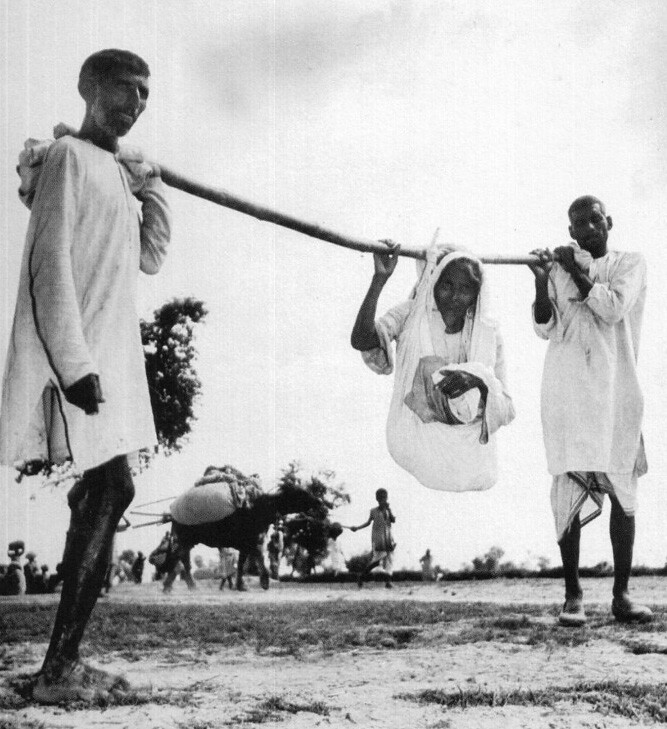
The Partition of the subcontinent in 1947 marks an exodus of estimates ranging from 10-20 million people from both sides of the newly demarcated borders between India and Pakistan, and as many as two million people killed in ethnic violence, with border areas in Punjab, Kashmir, and Bengal some of the most affected by violence and massive migration. My ancestral family, both maternal and paternal, moved from Kolkata, India to Lahore, Pakistan right after Partition. Most often while discussing this journey, my father mentions how the trains that took people from India to Pakistan were ambushed, and if they reached safety, the stay in refugee camps was inevitable if no familial and ethnic linkages were found. This was the case with my ancestors due to their Bengali heritage.
There is an overall silence in my family when it comes to ethnic friction, and due to fall of Dhaka in 1971, the ‘othering’ of Bengalis in Pakistan is something which further traumatized my family and elders who were already struggling to find land, identity, cultural affinity, and economic prospects in Lahore. At the state level, Pakistan also adopts a relative tone of silence on these issues, probably due to the delicate ethno-cultural fault lines present in its border areas.
Our family’s current integration level in Punjab is remarkable since the second generation married Punjabis and secured an education, land, and governmental positions in Punjab. This shows how the community as well as the state gave leverage to people who made an effort to integrate into Pakistan in the long term. However, on the flip side, no one in the second generation of my family speaks Bengali or has been to Kolkata, where our roots lie forgotten.
A part of my dedication to refugee issues comes from my own family’s refugee status. The resilience and transformation of several ethnic migrant communities in Pakistan, especially in Punjab, Karachi, and Islamabad, reflect a mixed image of persecution, segregation, and slow integration to eventual assimilation. One significant edge is the already diverse mix of indigenous populations in Pakistan and how over the years, migrants have been able to retain certain parts of their culture by leaving a strong impression through the arts, literature, political mobilization, and governmental as well as military service. Karachi and Islamabad, in particular, are two cities with migrants from across India and within Pakistan who have settled through business or governmental service and ended up becoming the leading strata of society, due to economic and bureaucratic influence gained over the years.
Home and Belonging
Anshu Saluja
My maternal and paternal grandparents as well as several other family elders were compelled to migrate across emerging national borders, in the face of the Partition of the Indian Subcontinent. Amidst rapidly escalating tensions and violence, they had little choice but to move. Some departed when the Partition was still in the offing, while others left hurriedly, right after it came into effect. On crossing the border, they went wherever they had some prior family connections or contacts. Slowly, they began to settle down and gingerly picked up the pieces to rebuild their upended lives.
In her narrative, her former home does not serve as a mere passive site; rather, it emerges as an important, soulful character that was enmeshed in the flow of events but unfortunately had to be left behind.
The homes that they left behind constituted an enduring memory for them. My grandmother still speaks wistfully of her home in Pakistan. She vividly recalls its windowpanes of colored glass. In her narrative, her former home does not serve as a mere passive site; rather, it emerges as an important, soulful character that was enmeshed in the flow of events but unfortunately had to be left behind. These memories signpost the turbulence of that time and the enduring trauma of displacement.
Retellings of lost homes, and indeed homeland, have led me to interrogate issues of belonging, place, and placemaking in contemporary urban India. Through my research, I examine how the occurrence of communal riots and targeted violence against specific communities produce exclusivist urban imaginaries, fragmented spatialities, and splintered social relations. I further discuss how different besieged and cornered communities negotiate these processes in order to make place for themselves and preserve their familiar, lived-in worlds.
A Dilliwala Amidst New-Age Lahoris
Anuttama Banerji
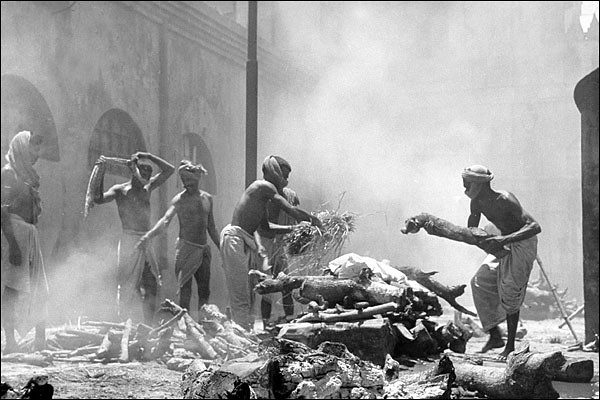
My grandfather, Dr. Ram Prasad Chakrabarty, a leading orthopedician in Delhi experienced the tragedy of the partition from close quarters as he witnessed the riots during the Calcutta Killings in 1946. As a resident doctor, he provided first aid to riot victims who were brought to Calcutta Medical College. In his words, only “tincture iodine” — an antiseptic was available to nurse the wounds. The suffering he saw as a doctor changed him completely as a person. The horrific memories of the partition continued to haunt him and give him sleepless nights even after his departure to the UK in 1949 when he became a Fellow of Royal College of Surgeons. In my opinion, he became a fervent nationalist due to these experiences— for he had a tremendous desire to serve his country and his people while building a new India. This desire, in his own words, brought him back to his desh from bidesh in 1954.
My grandfather settled in Delhi where he met my maternal grandmother, Mrs. Ashima Chakrabarty, a Bengali who was born in Jammu. Partition violence made her discontinue her studies at Kinnards in Lahore and the tensions in the aftermath of the attack of raiders pushed her to Delhi. As migrants, they settled in Jangpura – a locality constructed to host partition refugees in the 50s before they finally built their “home” in Delhi in 1978.
As a girl born and raised in Delhi, my own understanding of the partition was heavily influenced by that of my grandparents and parents—who as independent India’s “first generation” aspired to make the country “great”. My parents often spoke about the wars with Pakistan and China as legatees of the partition in dinner table conversations with my grandparents.
However, as I grew up, I developed a “personalized understanding” of this momentous event as I interacted with countless Pakistanis and Bangladeshis across different age groups. I was 17 when I visited Lahore on an exchange program and that trip changed my perspective about the Partition forever. I still remember with great clarity how people felt elated to know that I was a Dilliwala and most shopkeepers refused to charge a penny from me—they just wanted my evergreen qissas and kahanis from ‘their’ shehr Dilli. I still recount sitting around a crowd of people as a raconteur and talking about Delhi at a store perhaps near Old Anarkali called “Saleem Fabrics” as I sat and reflected on my life as a quintessential Dilliwala amidst new-age Lahoris. These anecdotes have come to shape my understanding of the partition in an otherwise vitiated political environment.
I still recount sitting around a crowd of people as a raconteur and talking about Delhi at a store called ‘Saleem Fabrics’ near Old Anarkali. I sat and reflected on my life as a quintessential Dilliwala amidst new-age Lahoris.
My stint in the UK as a Master’s student at the London School of Economics further cemented the notion that humanity is the greatest religion and good karma transcends across all boundaries. My personal friendships with several Pakistanis has endured the test of time and every interaction enables me to develop a more humane understanding of the larger India-Pakistan issue.
I would say that the partition is a distant memory today for most of us but for the generation that lived through that period — it was ‘their’ life. In keeping the memory of the partition alive, we are paying homage to the ordinary man’s extraordinary contribution in nation building in India as an “Indian” — I feel proud of this fact.
The Many ‘Partitions’
Namra Naseer
I remember Partition stories being a major part of my time growing up. It would include random stories my father and grandmother would share relating to what I studied at school and watched on television. For better or worse, I think the essence of Partition is still lost in my generation. It always fascinates me how contrasting the stories are when you look at where they are coming from. For instance, my father would tell me how his great grandfather won a gold medalist by British rulers back in the day in a boxing match and was known for his valor. While, whenever I read about it in textbooks, it misses out on the human element and focuses more on why it was so necessary and important. For a person of today’s age, I can’t bring myself to imagine a neighborhood where both masjid (mosque) and mandir (temple) would be cherished equally. One is but compelled to think, ‘why couldn’t it last then?’ Perhaps no one has a perfect answer. I believe Partition drives individual narratives to state relations in South Asia till date. While Pakistan and India celebrate their Independence days ecstatically every year and their soldiers raise brows at each other at Wagah (the border), there’s a person in almost every household reminiscing their memories from days before Partition.
Trauma and Remembrance
Sarral Sharma
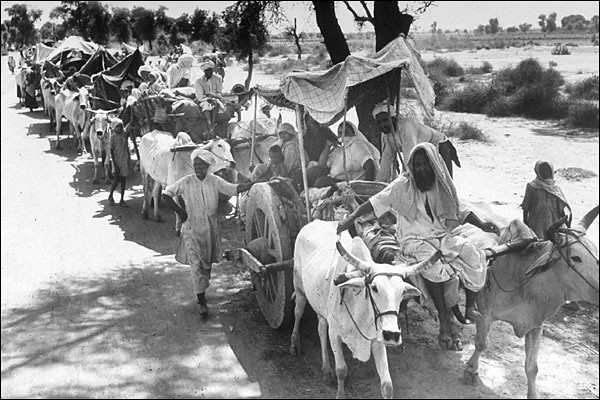
We are observing the 75th anniversary of India’s independence this year. Personally, Independence Day evokes conflicting emotions in me. Yes, it is a day of celebration, but we cannot ignore how India’s bloody Partition impacted millions on both sides of the border. I do not come from a Partition-impacted family, but I have studied the subject closely and have written my MPhil thesis on how Partition survivors from Sindh, Punjab, and Bengal, pass on their memories and trauma to the latter generations. During my research, I got a few chances to interact with first-generation survivors. It helped me look at Partition from a humanistic angle, besides the usual political and international security perspectives.
Even today, Partition survivors in both countries yearn to visit their hometowns across the border. These first-generation survivors are leaving us fast and some of them have not had closure yet. The forced migration is not just a traumatic experience for one generation, but it will continue to impact future generations as well. More importantly, when closure does not come, bitterness remains. The unorganized and politically motivated Partition of India in 1947 has played a crucial role in exacerbating tensions between India and Pakistan. Even after 75 years of independence, both countries can still do more to provide closure for these survivors.
Memories of Partition should also not be forgotten. Initiatives like the 1947 Partition Archive and the Partition Museum in Amritsar help citizens understand untold aspects and stories of the real Partition experience. These resources should be preserved and strengthened to ensure that we do not repeat the traumatic experiences of the past.
***
Image 1 (Featured Image): Saktishree DM via Flickr
Image 2 (The ‘Woman Question’): via GetArchive
Image 3 (Partition and Pakistan’s Religious Minorities): Dr. Gulam Nabi Kazi via Flickr
Image 4 (Ruminations from my Nana): Wikimedia Commons
Image 5 (Resilience and Transformation in Pakistan): Dr. Gulam Nabi Kazi via Flickr
Image 6 (A Dilliwala Amidst New-Age Lahoris): Saktishree DM via Flickr
Image 7 (Trauma and Remembrance): Saktishree DM via Flickr